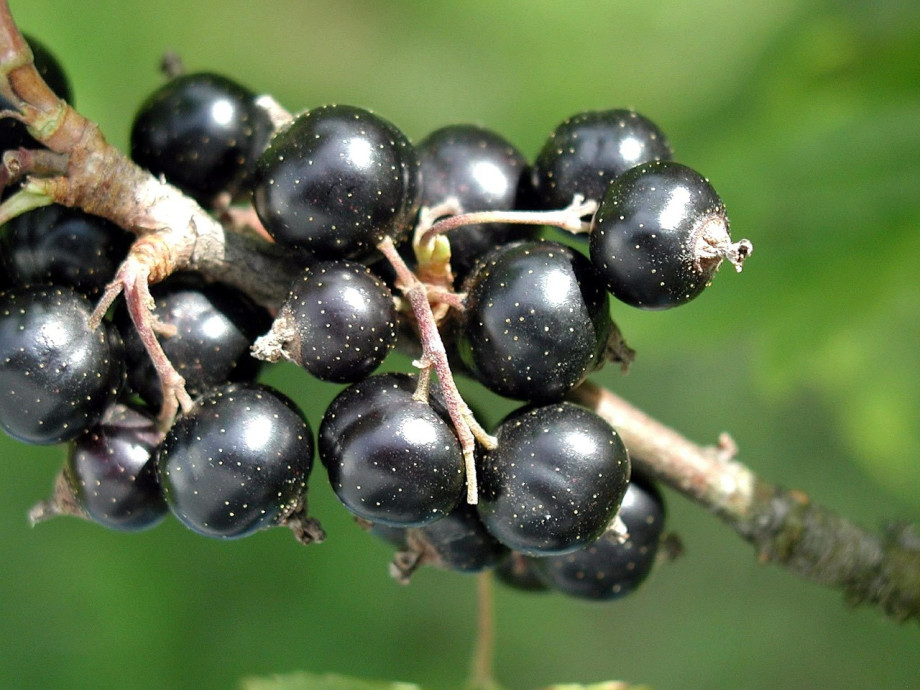The cultivation and importation of blackcurrants was banned in New York and other parts of the US for more than half a century because they were thought to help spread a fungus that threatened the timber industry. In 2003, New York became the last state to lift the ban, and since then farmers have once again started jumping on the currant bandwagon.
The campaign to repeal the ban in the state was led by Hudson Valley orchardist Greg Quinn. After reading about the repeal, Curt Rhodes of Penn Yan, N.Y., who had retired in 2004 after a 40-year career as a fifth-generation vegetable grower, applied for and received a $10,000 grant from the New York Farm Viability Institute (NYFVI) Small Specialty Crops Production Business-grant in 2006 to plant a one-acre field trial of blackcurrants.
After all, red and blackcurrants have four times more vitamin C than oranges and twice as many antioxidants as blueberries.
"The first year I expected only 1,000 pounds on the acre, but in the second and subsequent years I expect to harvest 2,500 to 3,000 pounds peracre," says Rhodes. "This has been such a successful venture that I have subsequently planted another 17 acres of blackcurrants. The first acre will be harvested by hand, but for the following year I immediately considered investing in a mechanical harvester."
Olga Padilla-Zakour, associate professor of food processing and director of the New York State Food Venture Center at Cornell, worked with Rhodes to explore potential new products for its blackcurrants.
"Once the currants are in full production, we will develop new drinks, jams and other products. At that point, we will be able to document the levels of beneficial antioxidants and vitamins in each product," says Padilla-Zakour.
The first Rhodes crop was sold to Montezuma Winery in Seneca Falls, N.Y., for a new variety of fruit wine ( cassis, the famous liqueur from Burgundy, is made from blackcurrants). Owner and winemaker Bill Martin says: "We make 23 different wines from honey, fruit and grapes. Blackcurrants will make an important contribution to our line".
The federal government had banned the cultivation of black and red currants in 1911 when the burgeoning timber industry pressured legislators to eliminate currants because they were thought to be an intermediate host to pine white rust. New currant varieties resistant to the disease were later developed and in 1966 the government gave the states the option of lifting the ban. Quinn persuaded the state of New York to lift the ban in 2003.
"New York State was the leading commercial producer of red currants in the United States before the ban," says Quinn, who is teaching landowners and farmers how to grow currants. He wants to see New York become the leading currant producer again and set the standard for quality. Quinn has developed 65 new currant products.

Greg Quinn was instrumental in overturning the original US ban on the commercial cultivation of currants in New York. He now grows this unique berry on one of the first currant farms in the United States and has the only dedicated currant nursery in the country. His passion for nature, gardening and cooking has served him well while teaching at the New York Botanical Garden and numerous other teaching venues for over 25 years and in his broadcasts such as "The Garden and Nature Guy" on various radio stations, WNYW TV in New York City, the national TV programme B. Smith with Style and more.
His company manufactures and sells the first currant products to be produced nationally in the USA under the brand name CurrantC™ All Natural. Quinn has written 8 children's books, a meditation book for teachers and numerous articles in national magazines. She has also managed and cooked for a restaurant in Bavaria, Germany. These days she enjoys her farming lifestyle on the farm in New York's beautiful Hudson Valley.
Greg Quinn told the story of the forbidden fruit in a 2014 Ted Talk.
Sources: Cornell Chronicle - CurrantC














